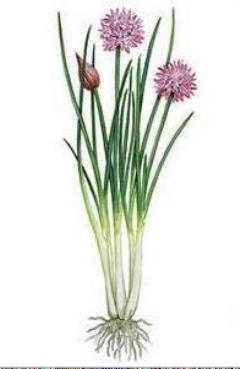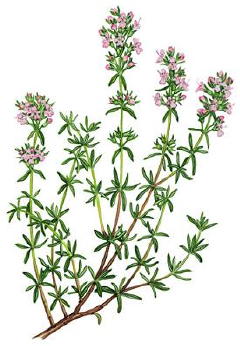|
Indoor Herb Gardens are Both Helpful and Healthful.Indoor herb gardens can be both helpful and healthful. Helpful in that they will brighten your day, everyday, and help clean the air. A home with plants growing inside is a pleasant home. Healthful in that you are more apt to be cooking a healthful meal when you use herbs as seasonings, instead of fast food packets. Kitchen gardens can add variety to your life. Although indoor herb gardens are relatively easy to maintain, there are several things that need to be taken into consideration, such as light, location, soil and selection. For light and location, an indoor herb garden requires sunlight, preferably direct. If you have a south facing window, visualize your garden there. Either right on the window sill or on a small table in front of the window. An old lazy susan makes a good base for your indoor herb gardens Your second choice for placing your indoor herb garden is either an east or west window, depending on which one gets the most sunlight. When starting your indoor herb garden, you're going to need to either buy some good potting soil or make your own. Being frugal, I prefer to make my own. One recipe for potting soil is to mix equal parts of sterilized garden soil, peat moss and either sand or vermiculite. If you are in need of some pearlite or vermiculite to mix with your potting soil and it is 9:30 on a Saturday night, don’t despair...just put a styrofoam tray into your blender and turn it on. The ground up styrofoam then could be called styro-lite and will serve the same purpose of creating a light soil mix that drains well. To sterilize some potting soil, place two or three inches of garden soil in a wheel barrow, or other flat container, and cover it with clear plastic. Place the covered soil out in the direct sun and let it cook for at least 8 hours, with an occasional stir. This solar sanitizer won’t mess up your kitchen, either. For each five inch pot add one teaspoon of limestone; this will give the soil the sweetness that herbs need. Now that you've got your potting soil ready, and your location picked out, you need something to put the soil and herbs in...some pots. If you don't have 5 pots that are about 5 inches in diameter, then round up 5 tin cans of the right size. Simply put some holes in the bottom of the can for drainage and then paint the new pot in the colors of your choice. Now let's look at what to put in your new, frugal, indoor herb garden.

Chives (Allium schoenoprasum) are the smallest species of the onion family Alliaceae and are a hardy perennial herb and ideal for indoor herb gardens. They impart a subtle onion-like flavor to your favorite stews and soups, especially potato and asparagus soups. The chopped leaves can also be sprinkled in salads or used to flavor various sauces, dips, soy mayonnaise, and sour cream. Chives can also be used as a garnish for cottage cheese, and potatoes. When harvesting, simply snip the needed stalks at the base. If you can find a friend who already has some chives growing, ask them for a start. Wet the soil well before splitting the clump and be sure to water the transplanted clump once it's in it's pot. Chives require regular watering throughout growth for best production. Soils need to be maintained near field capacity. Moisten the soil thoroughly when watering. If you can't find a clump to split, you can start chives from seeds. 
Common Thyme or Garden Thyme (Thymus vulgaris) is a commonly used culinary herb grown in indoor herb gardens. This is a Mediterranean perennial which is best suited to well-drained soils and enjoys full sun. Thyme will enhance the flavor of meat, fish and poultry dishes. Bruise fresh sprigs of thyme and tarragon and combine with red-wine vinegar and olive oil for chicken and fish marinades. Established thyme plants can be harvested at any time. Simply snip a few stems. The blossoms are also edible and are at their best when first opening. Thyme grows slowly from seed and should be allowed a few months of growth, before cutting. To get a wider selection of varieties, you can start thyme from seeds. Most nurseries do carry transplants in spring and summer, and of course you can find them 
French Tarragon (Artemisia dracunculus) is also known as Estragon. A half-hardy perennial, growing to about 60cm (24 in.) high and 45cm (18 in.) wide. Woody stems are covered with lance-shaped, thin, blue-green leaves about 5cm (2 in.) long. Flowers are small and greenish-white, and are seldom fully opened. French Tarragon goes with fish, shellfish, pork, beef, lamb, game, and poultry. Vegetables and fruits like leeks, potatoes, tomatoes, carrots, onions, artichokes, asparagus, mushrooms, cauliflower, broccoli, beets, peas, parsley, chervil, garlic, chives, lemons, oranges, rice, and barley all benefit from the addition of tarragon Harvest leaves before they begin to turn yellow in the fall. Snip off about a third of the branch and then pick off any damaged leaves and discard. Now wash and pat dry the sprig gently with cool water and a soft cloth, and snip the leaves off the branch with scissors. Handle the leaves carefully to prevent bruising. Cut the leaves up for culinary use. You can store the chopped leaves or sprigs in tightly sealed plastic freezer bags, label them and freeze them until you are ready to use them. Since French Tarragon seldom sets seeds, you need to find a source for the plant itself. If you can't find a local supplier, an on-line source is The Growers Exchange 
Sweet Marjoram (Origanum majorana) is generally described as a perennial, but is grown as an annual because it does not over-winter well when planted outside in colder climates. Sweet marjoram is suitable for all meats, fish and poultry. Use it in egg dishes, soups, stews, potatoes, squash, marinades, and in salads. It's also great combined with bay, garlic, onion, thyme, and basil. Once your plant is about 6 weeks old, you can start lightly harvesting by clipping back branches to the bottom set of leaves. For flavor that is sweet and mild, harvest foliage before blooms begin to form; for flavor that is more pronounced, harvest just before bloom. Use fresh of course, or dry in a dark warm place for about a week and store in dark containers away from light. You can start your Sweet Marjoram in your indoor herb garden either from seeds or by purchasing a plant from a local nursrey or on-line 
Dwarf Sage (Salvia officinalis minumus) is a very compact cultivar of ordinary garden sage. It reaches only 10" tall. Dwarf Sage is a wonderful herb for a windowsill herb garden, a kitchen garden. Sage is lemony, camphor like, and slightly bitter. Young leaves can be used dry in omelets, breads, marinades, and poultry stuffing. It combines well with meats, fish, and poultry, vegetables, citrus, garlic, eggs, and cheese. Sage is used as a natural preservative for meats, poultry, fish, and condiments. You can harvest the plants two or three times from spring through late summer. For fullest fragrance/flavor, harvest just before plants bloom. Cut the plant back about four inches above the ground. To dry leaves snip them from the branches, and spread them on cloth or paper out of direct light in a cool, well-ventilated area. They may also be dried in a forced-air drier at temperatures below 125°F. When crispy dry, store leaves in an airtight, light-tight container. Sage leaves may also be frozen. Sage is easily propagated from cuttings, divisions, or layering's taken from new growth on established plants in the fall. You can also find it in local nurseries or If you would like to know when I update this site or add some more content, email me and I'll add you to my notification list.
One of my recommendations for maintaining a frugal household is that you subscribe to my free, weekly newsletter, which always contains a dozen or so of my various tips. (I do put in one ad at the bottom for you to ignore.)
There are several volumes of Non-Consumer tips and how to articles available here. Some recommended reading is available here. Return from Indoor Herb Gardens to Frugal Gardening Return from Indoor Herb Gardens to The Frugal Non-Consumer
|
